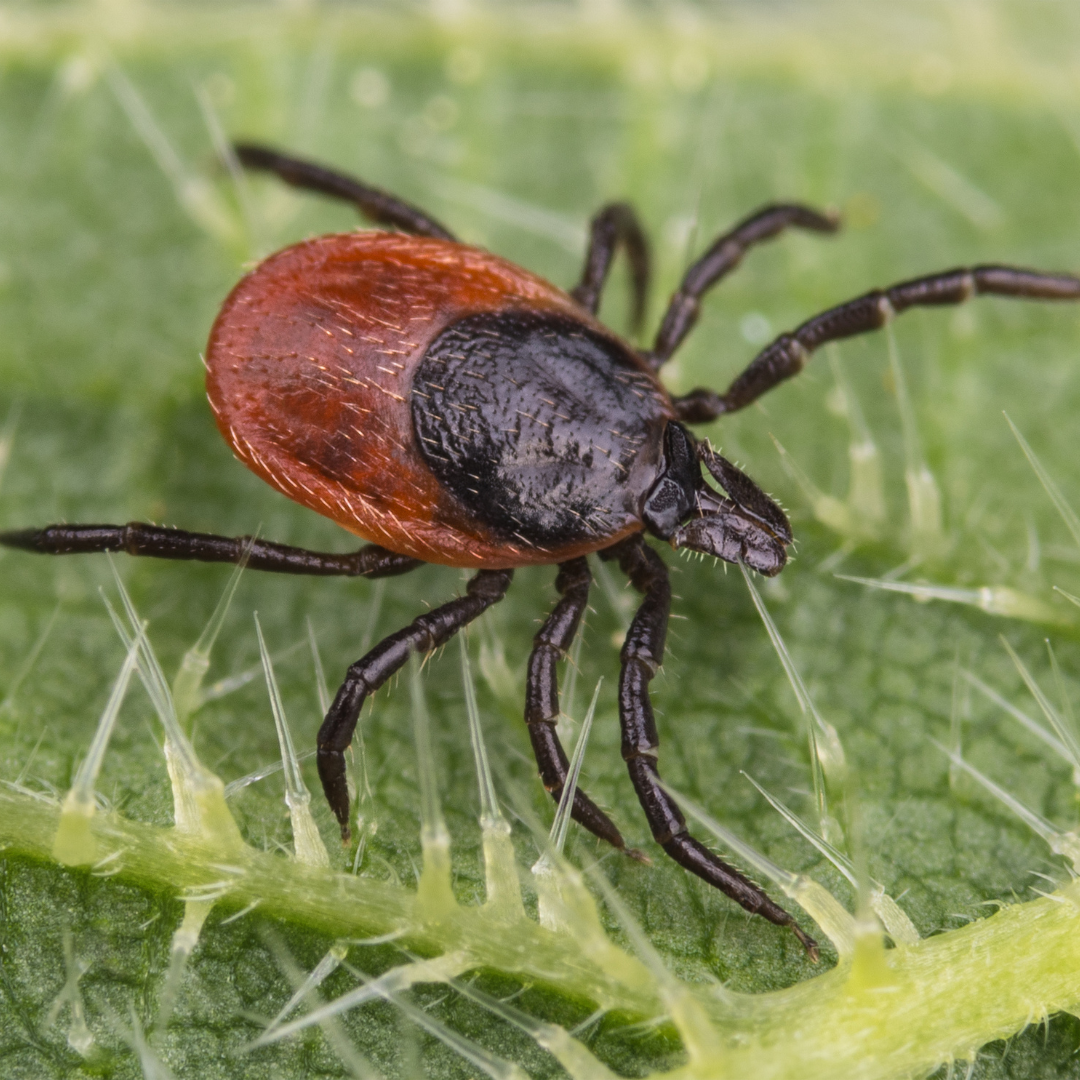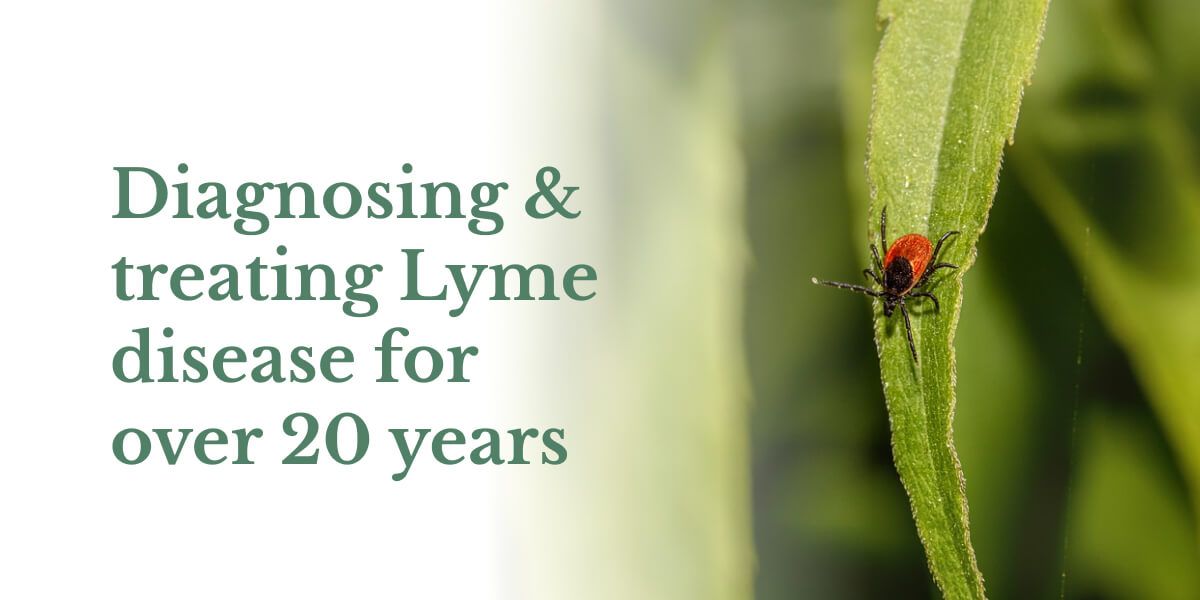Lyme Disease
What is Borrelia Disease?
This disease is caused by the bacterium Borrelia burgdorferi and, in rare cases, Borrelia mayonii. The infection is most commonly reported in the northeastern, mid-Atlantic, and north-central United States. The risk of contracting Lyme disease is highest in the spring and summer months when ticks are most active.
Understanding Lyme Disease
Lyme disease is a bacterial infection transmitted through the bite of infected black-legged ticks, known as deer ticks.
This condition has garnered significant attention in recent years due to its potentially severe health complications it can cause if left untreated.
Let’s delve into the symptoms, diagnosis, and prevention to provide a comprehensive overview of this important health concern.
What stage could you be in?
The symptoms of Lyme disease can vary and typically appear in stages:
1. Early Localized Stage (3-30 days post-bite):
-
- Erythema migrans (EM) rash: Often resembling a bull’s-eye pattern, this rash expands gradually and can reach up to 12 inches in diameter.
- Flu-like symptoms: Fever, chills, headache, fatigue, muscle and joint aches, and swollen lymph nodes.
2. Early Disseminated Stage (days to weeks post-bite):
-
- Facial palsy (loss of muscle tone or droop on one or both sides of the face).
- Severe headaches and neck stiffness due to meningitis.
- Heart palpitations or irregular heartbeat (Lyme carditis).
3. Late Disseminated Stage (months to years post-bite):
-
- Arthritis with severe joint pain and swelling, particularly in the knees.

-
- Chronic neurological complaints, such as shooting pains, numbness or tingling in the hands or feet, and problems with short-term memory.
Understanding Lyme Disease: A Patient’s Perspective
If you’re a Lyme disease patient, you’re likely already well-versed in this condition. In fact, you may have more knowledge about it than some medical professionals. Not only are you coping with the challenges of this disease, but you’ve also dedicated countless hours to researching the latest treatments and hoping for a cure to relieve your suffering.
Perhaps you’ve only recently received a diagnosis after months or even years of experiencing debilitating symptoms such as pain, fatigue, weakness or neurological problems. Unfortunately, you’re not alone. Over 70% of patients with Lyme disease see four or more doctors before receiving an accurate diagnosis and may be accused of exaggerating their symptoms or referred to mental health specialists.
Even if you have a confirmed diagnosis, you may be dismissed by mainstream medical practitioners. For many physicians, Lyme disease is viewed as a straightforward illness that can be successfully treated with just a couple of weeks of antibiotics.
Providing Tailored Lyme Disease Treatment in Waukesha, WI
Our practitioners know that no two cases are alike. We honor every aspect of your personal journey that led you to us, and consider you an equal partner in your care. Our team is committed to understanding the intricacies of the most advanced Lyme disease cases, offering specialized treatment that addresses your entire being – mind, body, and soul.
Chronic Lyme Disease
Chronic Lyme Disease, an infection that suppresses the immune system, creates a pathway for various co-infections like bacterial, viral, fungal, and parasitic. Lyme spirochetes, Bartonella, and the mosquito parasite Protomyxzoa Rheumatica can form biofilms, which protect them from antibodies, natural killer cells, and antibiotics once they enter our bloodstream.
Effective treatment requires a profound understanding of the Lyme Spirochete and tickborne infections, such as Bartonella and Babesia, which reside in every organ’s cells, causing chronic illness and symptoms throughout the body.
However, treating chronic Lyme disease is more complicated than just knowing about microorganisms, antibiotics, and the immune system. Effective treatment necessitates expertise in the brain and the functions of multiple body systems, including the endocrine, gastrointestinal, and cardiovascular systems.

The Connection Between Brain and Immune Function
Optimizing Brain Function
Neuroimmunologists have recently stressed that the immune system is merely the “tail end” of the neurological system. Thus, to enhance the immune function of Chronic Lyme patients, we must first address their ailing brains.
Essentially, neurotransmitters are chemical messengers that regulate the electrical function of our brain and body. These neurotransmitters play a significant role in controlling the up-regulation and down-regulation of our immune function. Unfortunately, patients with Chronic Lyme disease often have severe deficiencies and imbalances in their neurotransmitters, which adversely impact brain function. These imbalances only grow worse with each antibiotic therapy administered, exacerbating the distortion of brain chemistry and dysfunction.
Boosting Immune Function by Eliminating Environmental Toxins
Personalized IV Therapy Program for Chronic Lyme Disease
At our clinic, we understand that Lyme disease is a complex condition that requires a comprehensive treatment approach. Our chronic Lyme disease treatment protocols start with detox IV therapy treatments that remove toxins and prepare your body for the next phase of treatment.
After detoxification, we focus on optimizing your immune system by addressing nutritional deficiencies and gastrointestinal system dysfunction through healing IV therapy treatments. These infusions help your immune system’s “killing power” and clear toxins from your body.
Once the healing IV therapy treatment is complete, we begin the Lyme Kill Protocol with IV therapy infusion treatments that effectively treat the many infections that Chronic Lyme disease patients suffer from. By busting biofilm, we can target infections such as Bartonella, Protomyxzoa, Mycoplasma, and sometimes Rocky Mountain Spotted Fever. It’s important to note that each patient is unique and may have varying levels of cumulative toxicity, disease, or parasite, as well as an extra level of generalized sickness. As such, we consider all of these factors when discussing a timeline for treatment.
More About Lyme Disease
Explore our growing collection of articles.